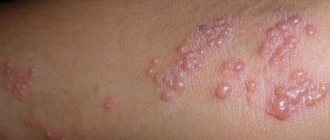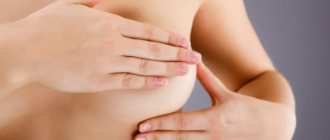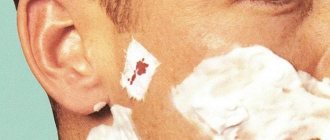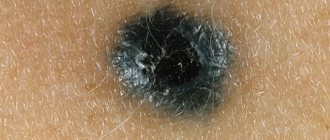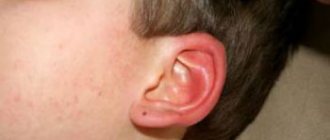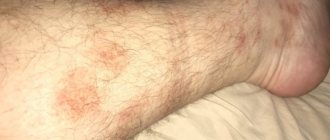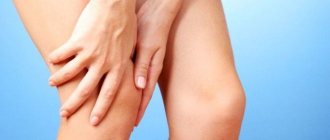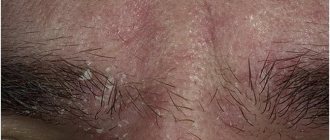Sunburn is a common occurrence, especially in the hot summer when many people like to sunbathe on the beach. However, you should be extremely careful, especially for the first time, when the skin is still tender after wintering.
Just lie a little under the baking sun, and you will immediately develop a sunburn - the skin on your face, back and other parts of the body begins to burn and acquire a characteristic reddish tint. After all, a sunburn is literally a skin burn caused by ultraviolet (UV) radiation. The result of such damage is inflammation of the skin.
If you have received a severe sunburn, the first signs will begin to appear within a few hours, and a day later the full clinical picture will appear - itching, swelling, redness, soreness, dehydration and other “joys” of a sunburn.
In this case, you must immediately provide first aid to relieve the effects of sunburn. As a rule, treatment is carried out at home using pharmaceutical ointments, creams, sprays, as well as time-tested folk remedies.
Symptoms of sunburn
Sunburns, like thermal burns, are divided into three stages: solar erythematous dermatitis, blistering stage and necrotic stage.
The severity of the burn is affected by skin type, amount of time spent in sunlight, and health status. For example, it is much easier for people with fair skin to get a severe sunburn, and it will take longer to heal.
Most often, skin damage as a result of exposure to ultraviolet rays is manifested by redness and soreness of the skin, and blisters may also appear, grouped into blisters, with serous contents.
- With a mild burn, the skin becomes inflamed, red, and even a light touch causes pain. After a few days, the skin begins to peel off and the sunburn goes away without leaving visible marks.
- Severe sunburns are complicated by severe burning of the skin, blistering, severe dehydration, fluid and electrolyte imbalances, and possible infection.
In addition to the above symptoms, the following are also observed:
- chills;
- temperature;
- nausea and/or vomiting;
- symptoms resembling vomiting;
- blistering;
- skin loss observed 4-7 days after the burn.
Other problems that may occur along with a sunburn include:
- heat or sunstroke, or other problems associated with general overheating;
- allergic reactions to exposure to the sun or sunscreens;
- eye disorders, such as burning pain, decreased, partial or complete loss of vision.
Your skin type determines your susceptibility to tanning and sunburn. People with fair or freckled skin, blond or red hair, and blue eyes appear to be especially sensitive.
Symptoms
Sunburns have specific symptoms. If the skin is slightly damaged, it becomes hyperemic, swollen, hot, pain occurs when touched, and itching is also noted.
With a more serious lesion, blisters with serous fluid form on the body, and swelling spreads to the fatty layer of the skin. In severe cases, the patient is concerned about symptoms of overheating of the body such as nausea, vomiting, fever, weakness and headache.
It is worth noting that people with fair skin are more prone to developing sunburn, since it contains very low levels of melanin, which protects the skin from exposure to scorching rays.
What to do if you have a sunburn?
Every person should know what to do if a sunburn occurs. This will ease your symptoms and get better sooner.
- First of all, after you have received a sunburn, you need to go into a room where ultraviolet rays do not penetrate.
- Next, it is important to understand how severe the burn was and whether blisters have appeared. If they are present, it means that the degree of skin damage is significant, which requires urgent medical attention.
- You can temporarily relieve pain with a cold shower or compress.
- Apply a cream with a soothing effect to the damaged area; chilled aloe juice is also suitable. It is important to remember that applying oils, both creamy and vegetable, to burned skin is strictly prohibited.
Traditional methods of treating sunburn
How to apply sunburn? The most common and well-known folk method for treating sunburn is treating burnt skin with fermented milk products: sour cream, kefir, sour yogurt. They are applied to burns several times a day.
They cool the skin and saturate it with moisture, eliminating irritation and dryness. However, not everyone shares the correctness of this method, since the fatty consistency of fermented milk products slows down the skin regeneration process. If blisters appear on the skin, you should not apply kefir or sour cream to the burns.
Sometimes for sunburn, compresses of strong brewed tea are used for 15-20 minutes several times a day. To reduce skin friction on the sheets while you sleep, you can sprinkle regular baby powder or talcum powder on the fabric.
To reduce pain from burns and speed up skin healing, you can use potato starch, herbal infusions of chamomile, calendula, and strings in the form of lotions.
Freshly squeezed aloe juice, watermelon and cucumber juices also have a beneficial effect on burns. Cabbage leaves are often applied to damaged skin. You can soften the skin with wheat germ oil.
First aid
When the burn is not too severe, you can treat yourself. Be sure to consult a doctor if you have received a severe burn and have the following symptoms:
- strong pain;
- large blisters;
- headache, nausea and vomiting;
- confusion, weakness.
Providing first aid is aimed at reducing the temperature, providing the epidermal cells with moisture, removing redness, and reducing the sensation of pain.
How to treat? To do this, you can use compresses and lotions made from chilled black or green tea, chilled decoctions of medicinal herbs that have anti-inflammatory and antiseptic effects (for example, chamomile, calendula, lavender). Remember to drink enough water to prevent dehydration.
Cooled skin must be moisturized, otherwise immediately after cooling it will dry out and become even more inflamed. After-sun ointments or anti-sunburn aerosols will do the job well. Folk remedies are also suitable - kefir, sour cream, milk, egg white; you can spread these products on yourself at home.
To relieve pain, you can take non-steroidal anti-inflammatory drugs - Imet, Ibuprofen, etc. or take a cool bath or shower. Antihistamines are suitable to relieve itching and burning. Further actions relate to therapeutic measures and are aimed at preventing infection of damaged skin and its speedy restoration.
What happens during a burn?
After excessive exposure to the sun, inflammatory processes occur in the skin tissues. This is primarily expressed by redness and painful sensations when touched. A person may experience mild itching and discomfort, a feeling of tight skin. After a few hours, and sometimes days, the affected area of skin may become blistered, rashed, crusted over, and even swollen. In this case, a person may develop dehydration and a rise in temperature.
All these processes may differ depending on the type and structure of a person’s skin, the time spent in the sun, the use of protective equipment before tanning and after first aid. Burns can manifest themselves in completely different ways and in different parts of the body. The most commonly affected areas are the back, shoulders, chest and face. You can completely get rid of the symptoms that appear 4-7 days after the onset of inflammatory reactions.
Important! With prolonged exposure to the sun, burns may sometimes not appear. But at the same time, other negative processes can occur in the human body. Most often, this is dangerous and affects the skin in the form of new freckles and wrinkles. Excessive sun exposure can also cause the development of skin cancer.
How to treat sunburn at home
If the skin is damaged by the sun, you need to avoid exposure to ultraviolet radiation for several days, that is, let the skin calm down and rest without appearing in the sun.
Treatment at home involves the use of folk remedies, they will help relieve sunburn of the skin.
- One of the oldest methods, simple and accessible: you need to lubricate the burned areas with sour milk, kefir, natural yogurt (without fruit additives and sugar). Sometimes sour cream is included in this list, however, due to its fat content, it creates a favorable environment for the development of microorganisms on injured skin.
- Apply a piece of raw, peeled potato to the sun-damaged area of the skin and hold it for several minutes, periodically replacing the applied slices.
- In the case of mild thermal external burns, use a thick white separated from the yolk and apply it to the treated surface of the skin. The resulting film should not be removed; it should fall off on its own.
- You need to cut a fresh aloe vera leaf in the middle to extract the juice. Apply aloe vera juice to sunburn blisters, allow it to dry and absorb into the skin. If fresh aloe vera leaf is not available, you can use aloe vera gel, which can be purchased at the pharmacy.
- It is necessary to pour a tablespoon of dry chamomile with a glass of boiling water, leave for about 30 minutes. And when it cools down, make a compress from the infusion, applying a piece of moistened gauze to the burned areas.
- White cabbage leaves are washed and doused with boiling water to make them softer. They are then cooled and applied to the burns, secured with a bandage and worn throughout the day. This simple method helps reduce pain and swelling.
Try these folk recipes, they will help reduce symptoms and relieve sunburn in a short time.
The best remedy for sunburn
At the moment, many products have already been developed that can soothe the skin after exposure to sunlight. Preparations of this spectrum are distinguished by unique components that are suitable for different skin types. To correctly select the product that will be best for a particular person, it is worth having an idea of what they are.
Panthenol
It is creams and sprays that contain panthenol that are the most common for sunburn. If you are still wondering what to apply to a sunburn, use Panthenol.
How Panthenol works for sunburn, how to use it.
The product is based on panthenolic acid, which soothes the skin, promotes its regeneration, and relieves pain.
Preparations based on it are available not only in pharmacies, but are also sold in all supermarkets. Taking into account the cost, the cream is affordable for everyone, it can be applied to children's skin. The components are non-toxic and the effect is achieved fairly quickly.
Bepanten
The cream has a cooling effect on sun-damaged skin. Thanks to the combination of the antiseptic chlorhexidiine and the active substance called dexpanthenol, rapid restoration of burnt skin is ensured.
Treated burns heal faster, complications do not develop, and infection cannot penetrate the damaged areas due to the presence of an antiseptic in the cream.
The product has proven itself well among those who have spent too much time under the scorching sun.
Reviews of Bepanthen are good because it has an analgesic effect, is easy to apply and is easily washed off with plain water.
The skin is quickly restored, the resulting sunburns literally “before our eyes” begin to disappear. Can be applied to children's skin without any worries.
Aloe gels
Many people know that aloe is a natural remedy that soothes sun-damaged skin while providing an antibacterial and analgesic effect. Therefore, ointments for sunburn often contain components with aloe.
Remedies consisting of herbal components quickly help relieve pain from the affected areas.
The therapeutic effect occurs quite quickly, redness disappears from the skin, and itching decreases. When the gel is applied, sunburned areas are cooled and the rate of skin regeneration increases.
Such products are gentle, which is very important when you literally cannot touch the body. Within a few hours after application, there will be no pain left from minor injuries, and the skin will not be dry.
How to apply sunburn at home
Above we have listed how you can lubricate a sunburn at home using traditional medicine. What else helps well in this case?
This part will present effective pharmaceutical products - ointments, aerosols and burn creams. Before lubricating a sunburn, it is very important to make sure that the skin is intact and under no circumstances open the blisters.
- Panthenol in aerosol form (spray) - relieves inflammation of the skin well, covering it with a specific protective film.
- Hydrocortisone ointment, 0, 05 or 1%, depending on the age of the victim and the degree of damage to the epidermis.
- For erosive lesions after burst blisters, Dermazin or Olazol helps.
- Indomethacin or Diclofenac - these drugs help not only relieve pain, but also relieve swelling, which is sometimes very pronounced.
- Bepanten in the form of an ointment or cream, an antimicrobial, analgesic and regenerating drug.
- Cooling gels containing menthol and anesthetics.
These medications will help relieve the symptoms, and after a few days the sunburn will no longer bother you.
See also: how to treat prickly heat in adults at home.
Causes of sunburn
Why the body tans quickly in the sun, most likely, this question will torment everyone for a long time, but to be honest, it’s not worth going into details now, because it will be completely off topic. It's another matter to figure out the reasons.
The main cause of sunburn is prolonged exposure to the scorching sun. It doesn’t matter whether you periodically wet yourself with water or not, our skin is still not particularly friendly to such exposure.
On a hot summer day, cloudy weather with occasional rays will not protect your skin, and it will also be attacked by ultraviolet radiation, and besides, heat stroke can overtake you.
How to avoid sunburn
- Stay in the sun as little as possible;
- Do not remove clothes under the scorching rays;
- Apply protective equipment.
In the summer, it is especially important to follow all these rules, because swimming in rivers, lakes and seas ends exactly like this. Therefore, try not to be in the open air at lunchtime, protect yourself and your skin from burns.
If you want to spend your vacation by the sea, but you are not afraid of ultraviolet radiation, then purchase a special cosmetic product for burns and periodically lubricate your skin with it.
What are the dangers of sunburn?
Fortunately, this is not a burn from boiling water, but still the consequences are the most terrible.
- Redness;
- Itching;
- Loss of moisture;
- Soreness;
- Swelling;
- blisters;
- Ulcers;
- Peeling;
- Suppuration.
What is not recommended to do when your skin is burned?
In order not to worsen your condition, you should not do the following things at home:
- Wash damaged areas using alkaline soap? and also rub them with a washcloth or scrub;
- Smear the skin with products that contain alcohol;
- Treat burns in the acute period with Vaseline-based products, because such products seal pores and prevent the skin from breathing;
- Puncture or squeeze out blisters, as this is a direct path to skin infection;
- Drink alcohol, strong tea or coffee.
Follow preventative measures when tanning in the sun, and then sunburn will not bother you.
Burns on the face
The face is constantly in contact with wind, frost, and sun, so special attention must be paid to its protection. You should not neglect the prevention of burns and protect your skin from the harmful effects of the external environment, because this will certainly lead to the development of wrinkles and early aging.
A burn on the face is not always noticeable. As a rule, it appears only in cases of serious damage and is characterized by redness and swelling. If such a problem occurs, you should immediately begin providing emergency assistance.
How to prevent sunburn
- Avoid sun exposure between 10am and 5pm.
- Use a broad-spectrum sunscreen with SPF 30 or more. Apply every 2 hours.
- Cover exposed areas of your body with light clothing made from natural fabrics and wear a summer hat with a brim.
- Use natural skin moisturizers at night. This will help restore moisture and tone to the skin, which is very important in hot, dry weather.
More tips. How to treat and apply sunburn and household burns at home


